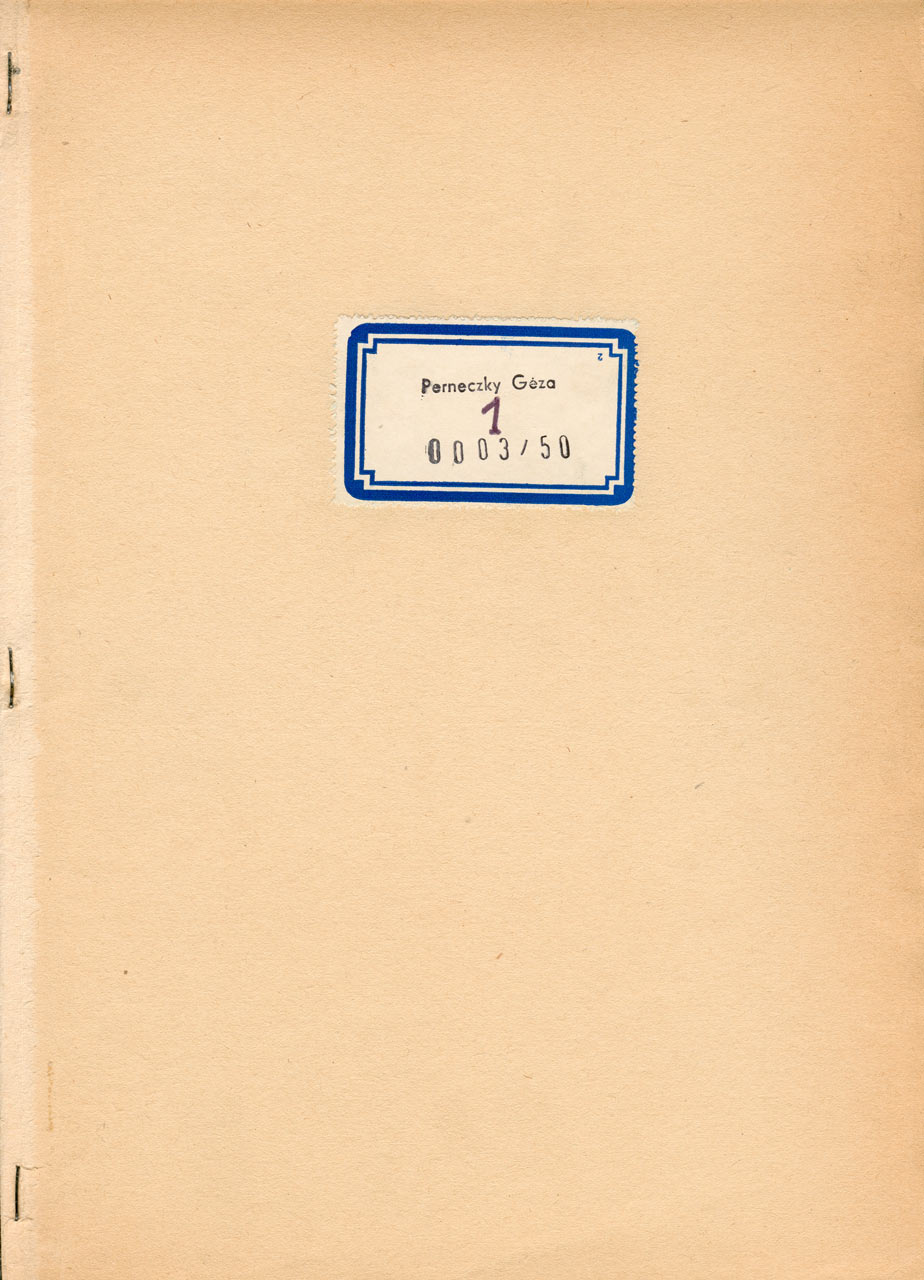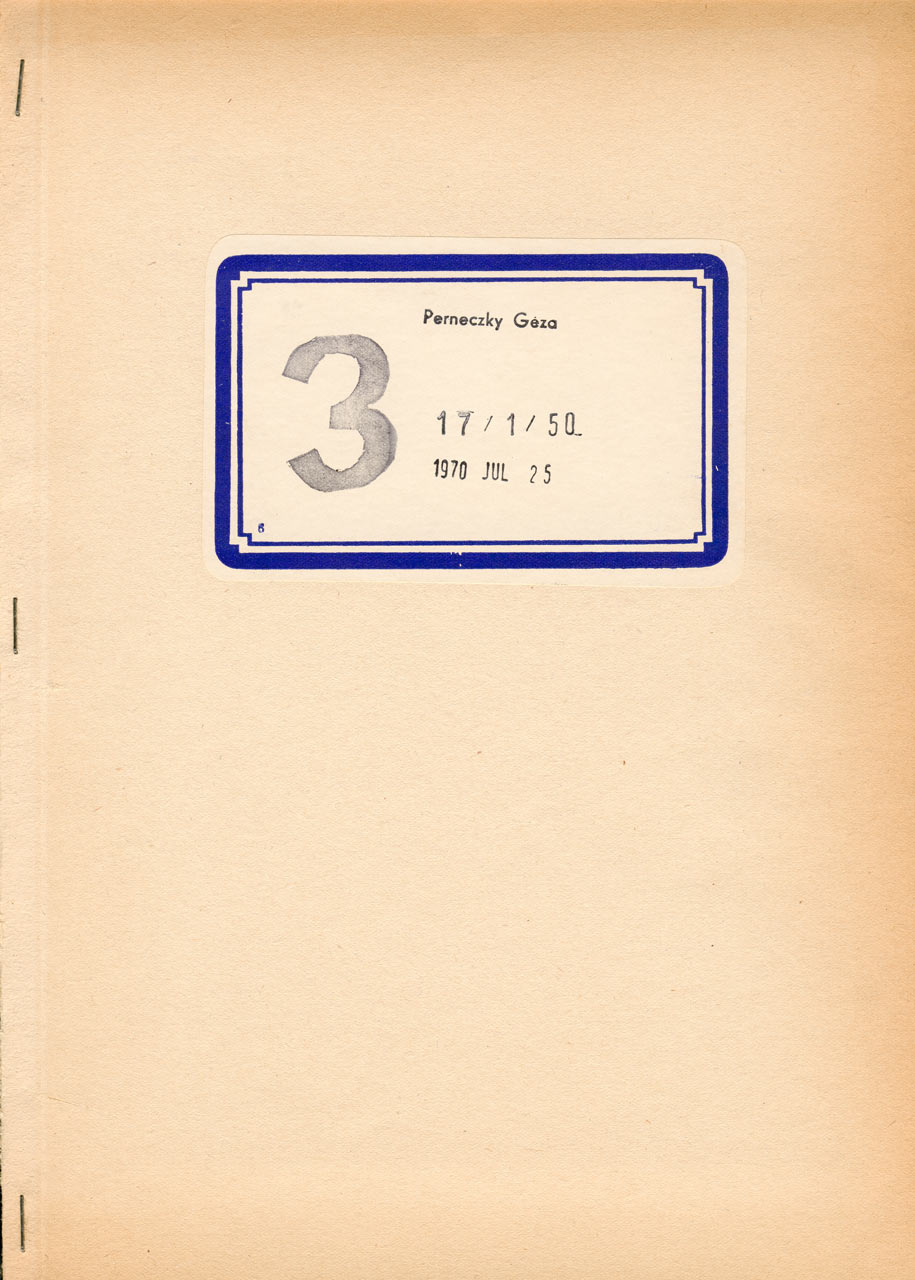In spite of growing personal and political difficulties, my last year in Hungary remained productive. In addition to the exhibition reviews that I was writing for a literary journal, I was already becoming more and more active in the underground. I also published illegal material such as the Five Books (1970), a series of handmade, staple-bound booklets that I distributed among my friends and acquaintances at exhibition openings. These brightly colored pamphlets contained conceptual works that were not without irony and the occasional underlying political connotation. They were realized in the style of the artists’ books that were to become popular later on; in other words, they were emphatically mixed media and comprised original works and materials. For example, the paradoxical image Travel by T-Carriage — in which one train wagon connects perpendicularly to another, preventing the movement of both carriages in any direction — evokes the paralysis caused by the faulty and illogical design of the political system.
The sheet titled Look at the Beautiful Hungarian Parlament [sic] that was equipped with a punched peephole through which, instead of a photograph of the well-known and much-admired Parliament building in Budapest, the viewer’s gaze fell on nothing more than a second sheet of blank paper, this time pink (pink rather than red, because Hungary was regarded as the jolliest barracks in the otherwise unrelievedly red Socialist camp). Or there might be a number of erotic innuendos with which my intention was simply to provoke. To take another example: a square of aluminum foil was cut out and affixed to one of the pages, creating a kind of self-portrait thanks to the resulting mirror image. In later years, gimmicks of this kind, and any number of variants of them, could be seen in the apparently more popular than serious conceptual works among the concrete art and graphics produced in the underground or subcultural circles.
The idea of bringing together conceptual-type works (which the Five Books in effect were) in the form of a pamphlet had its origins in the catalog of the exhibition When Attitudes Become Form. I had previously been on a study trip to Germany in 1969, where I had taken the opportunity to visit Harald Szeemann’s legendary exhibition, which had traveled on to the art museum in Krefeld (Haus Lange). I realized that justice could be done to the kind of art on display even without the expensive materials and physical dimensions that were otherwise the norm in the visual arts. The exhibition catalog took the form of a dossier and seemed an artwork in its own right — one that comprised only ideas and plans for the realization of particular concepts. The term dematerialized art was already in the air. In the light of these precedents, it was not difficult for me to arrive at an art form for which the modest dimensions of a magazine or booklet sufficed.
Géza Perneczky, In the Underground Between East and West, in: Promote, Tolerate, Ban: Art and Culture in Cold War Hungary, Getty Publications (edited by Isotta Poggi & Cristina Cuevas-Wolf), 2018, p. 95-110





